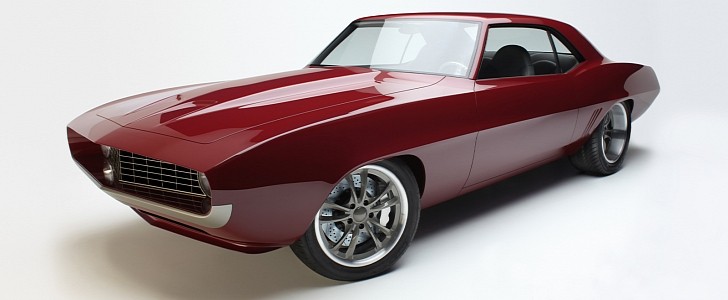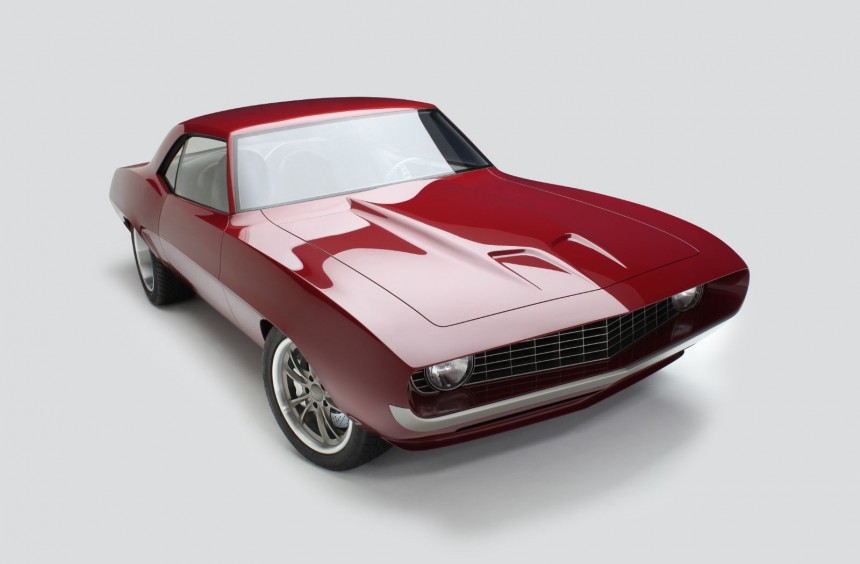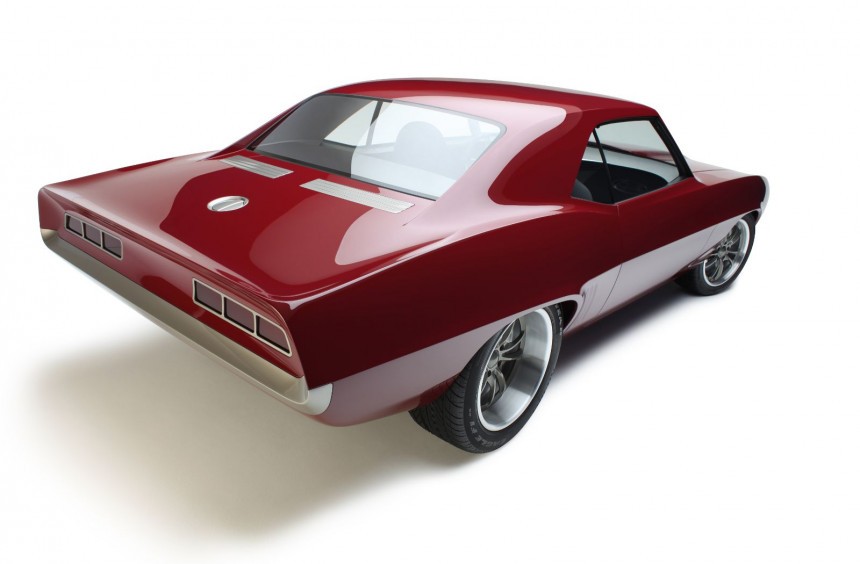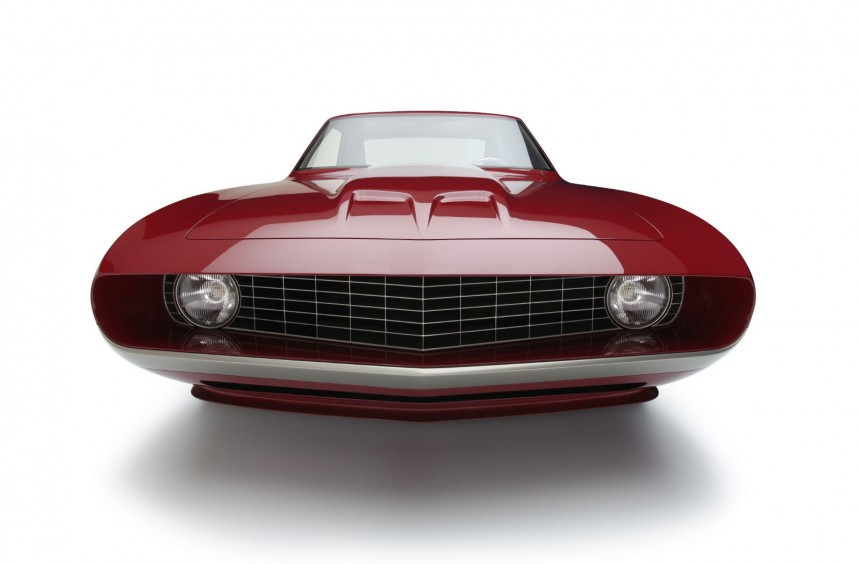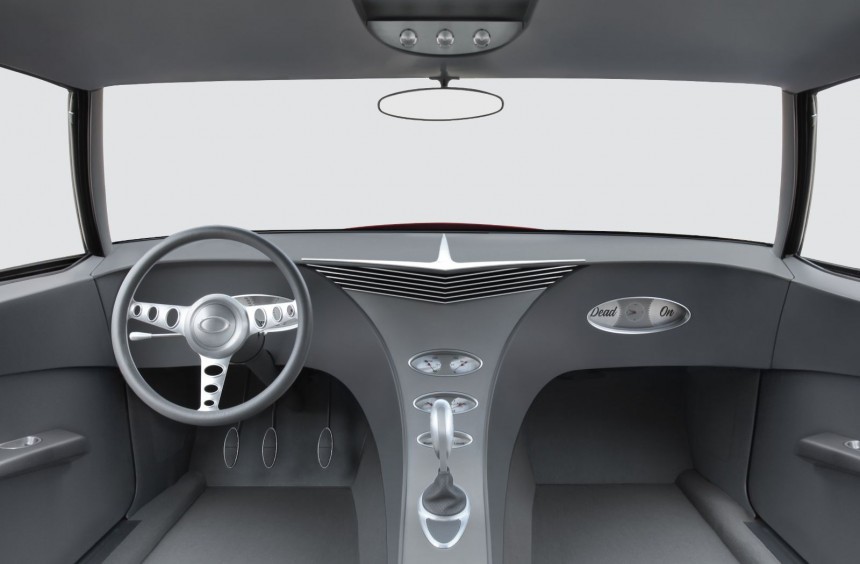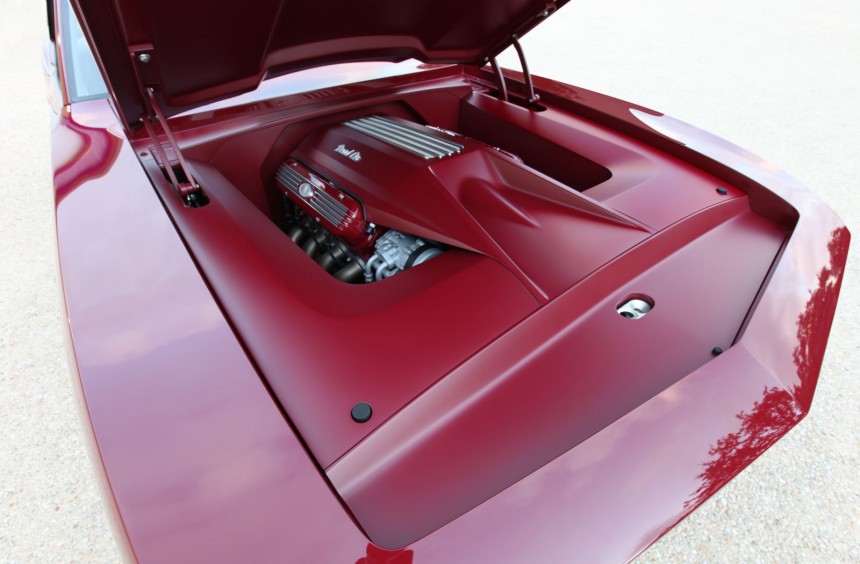With modern muscle car hardware hidden under a subtly yet comprehensively redesigned body that somehow manages to retain every single line that made the first-gen Camaro an American icon, this exquisite one-ff by Jeff Lilly Restorations is a four-wheeled work of art.
In 1964, Ford dramatically altered the future of the American automotive industry when it introduced the Mustang and gave birth to the widely-popular pony car segment. With European styling and a wide range of options that made it appealing to literally everyone, it quickly became a best-seller.
While Chrysler, one of the Blue Oval’s main rivals was quick to act and managed to announce its contender (the Plymouth Barracuda) a few weeks before the Mustang made its public debut, General Motors took its time and unleashed its duo of pony cars in 1966. Built around the brand-new rear-wheel drive F-body platform, the new Mustang challengers were dubbed Pontiac Firebird and Chevrolet Camaro. Although neither managed to outsell the Mustang for the next decade, the Camaro became its greatest rival on the street, race track, and drag strip.
In doing so, the first-generation Camaro also became one of the icons of the muscle car era and one of the most beloved American vehicles of all time, surpassing even the Corvette in the hearts of many Chevy enthusiasts.
Manufactured only until 1969, close to 700,000 original Camaros took to the streets and because of its iconic status, most of them have survived to this day. Some have been obsessively looked after and their owners chose to retain their original state, spending tens of thousands on period-correct restorations while others preferred to modernize them.
Throughout the years we’ve seen countless restomodded Camaros but very few are truly impressive. One such example is this ’69 which has been drastically yet elegantly redesigned by the experts at Jeff Lilly Restorations.
Based in San Antonio, Texas, the shop which traces its roots all the way to the original custom car scene of the 1950s is a place where enthusiasts’ most priceless possessions are transformed into true works of automotive art.
In the case of this Camaro fittingly nicknamed Dead On, the owner wanted a unique restomod that would not only subtly blend modern tech with the gorgeous classic lines of the original model but somehow enhance the “Camaro-ness” of it all. That’s easier said than done, but as you can see, the finished product manages to do exactly that.
To the untrained eye, it looks much like the original six-cylinder ’69 that it once was. Yes, it has a modern powertrain, new wheels, a fresh coat of paint, and a restyled hood, but everything that made the Camaro one of the most beautiful members of the muscle car dynasty has been left untouched, right? Well, not quite.
If you’re a true enthusiast that’s familiar with every line and curve of this legendary ride’s beautiful body, you’ll notice a bunch of discrete modifications, like the integrated bumpers or the daring absence of a trunk lid, but you’ll have a hard time pinpointing many other redesigned features and this car is chocked full of them.
When viewed from the front, the exquisite one-off boasts a completely new grille that resembles the original one but was mounted further inside the nose, accentuating the aggressiveness of the original front end. Furthermore, the headlights that Chevy designers were forced to push out of the grille for roadworthiness reasons were replaced with completely bespoke variants and integrated into the receding lines of the new grille.
The front also lacks the protruding line that ran from the top of the grille and across the hood on the original Camaro. Surprisingly easy to miss, this daring delete of a classic feature makes the area above the grille smoother and more free-flowing, preparing the eye for the fork-like, low-profile cowl on top of the hood. This is one of the most obvious and daring additions to the original design, but then again it somehow manages to fit in flawlessly.
Moving on to the side, the absence of door handles or rearview mirrors is hard to miss, yet the enhancement of the Camaro’s distinctive lines such as those at the quarter-panels which have been slightly enlarged can go unnoticed even by seasoned experts. In addition, the vents that once stood in front of the rear wheels were taken down but instead of leaving the area clean, three ample grooves on each side have taken their place.
A hallmark of the shop’s expertise, all the masterfully rebuilt body panels are gapped at a0.218 inches (5.55 mm), while the bumpers, grille, and all other trims feature mind-blowing, 0.0625-inch (1.58 mm) gaps.
This brings us to the rear, arguably the most boldly modified section of the body. The trunk lid has no gaps because, underneath it, the car’s gas tank, battery, engine management system, and fuse box are hidden. Without much room for luggage, the team decided to make a design statement and smooth out the rear end by deleting the lid and placing the gas cap in the center. Still, the aforementioned components are relatively easy to reach via a sliding rail system found behind one of the rear seats.
Apart from this feature, the height of the rear window was reduced by four inches (101.6 mm), a modification that helped harmonize the look of the original rear deck.
With all its sheet metal magic, the exterior manages to retain and enhance everything that made the original Camaro great. Things are much different inside the cabin, where we find a complete departure from the 1969 model. Completely and audaciously redesigned, the interior oozes first-gen Corvette vibes reinterpreted with a modern touch. The smooth dashboard and center console were adorned with retro-inspired gauge custom-built by Classic Instruments, while the driver and passengers were treated to comfortable bucket seats upholstered in fine gray leather.
In terms of modern hardware, the Dead On Camaro sits on an extensively modified frame that received suspension components from Detroit Speed and huge slotted and drilled brakes from Baer.
At the heart of it, all sits a custom LS-based V8 that can spit out around 720 horses. It sends all that raw power to the rear wheels through a Tremec five-speed manual, and its looks have been improved by one of the most gorgeous engine covers that you will ever see.
Painted in an elegant dark shade of red, with brushed metal trims and sitting on wide spoked wheels, Jeff Lilly Restorations’ Camaro is in every way, shape, and form dead on, managing to redefine the notion of a restomodded classic. More of a concept car than a custom, it looks like the natural progression of Chevy’s initial design, and I’m sure that even the most demanding Camaro purists can agree that calling it a work of art is by no means an exaggeration.
While Chrysler, one of the Blue Oval’s main rivals was quick to act and managed to announce its contender (the Plymouth Barracuda) a few weeks before the Mustang made its public debut, General Motors took its time and unleashed its duo of pony cars in 1966. Built around the brand-new rear-wheel drive F-body platform, the new Mustang challengers were dubbed Pontiac Firebird and Chevrolet Camaro. Although neither managed to outsell the Mustang for the next decade, the Camaro became its greatest rival on the street, race track, and drag strip.
In doing so, the first-generation Camaro also became one of the icons of the muscle car era and one of the most beloved American vehicles of all time, surpassing even the Corvette in the hearts of many Chevy enthusiasts.
Throughout the years we’ve seen countless restomodded Camaros but very few are truly impressive. One such example is this ’69 which has been drastically yet elegantly redesigned by the experts at Jeff Lilly Restorations.
Based in San Antonio, Texas, the shop which traces its roots all the way to the original custom car scene of the 1950s is a place where enthusiasts’ most priceless possessions are transformed into true works of automotive art.
To the untrained eye, it looks much like the original six-cylinder ’69 that it once was. Yes, it has a modern powertrain, new wheels, a fresh coat of paint, and a restyled hood, but everything that made the Camaro one of the most beautiful members of the muscle car dynasty has been left untouched, right? Well, not quite.
If you’re a true enthusiast that’s familiar with every line and curve of this legendary ride’s beautiful body, you’ll notice a bunch of discrete modifications, like the integrated bumpers or the daring absence of a trunk lid, but you’ll have a hard time pinpointing many other redesigned features and this car is chocked full of them.
The front also lacks the protruding line that ran from the top of the grille and across the hood on the original Camaro. Surprisingly easy to miss, this daring delete of a classic feature makes the area above the grille smoother and more free-flowing, preparing the eye for the fork-like, low-profile cowl on top of the hood. This is one of the most obvious and daring additions to the original design, but then again it somehow manages to fit in flawlessly.
Moving on to the side, the absence of door handles or rearview mirrors is hard to miss, yet the enhancement of the Camaro’s distinctive lines such as those at the quarter-panels which have been slightly enlarged can go unnoticed even by seasoned experts. In addition, the vents that once stood in front of the rear wheels were taken down but instead of leaving the area clean, three ample grooves on each side have taken their place.
This brings us to the rear, arguably the most boldly modified section of the body. The trunk lid has no gaps because, underneath it, the car’s gas tank, battery, engine management system, and fuse box are hidden. Without much room for luggage, the team decided to make a design statement and smooth out the rear end by deleting the lid and placing the gas cap in the center. Still, the aforementioned components are relatively easy to reach via a sliding rail system found behind one of the rear seats.
Apart from this feature, the height of the rear window was reduced by four inches (101.6 mm), a modification that helped harmonize the look of the original rear deck.
In terms of modern hardware, the Dead On Camaro sits on an extensively modified frame that received suspension components from Detroit Speed and huge slotted and drilled brakes from Baer.
At the heart of it, all sits a custom LS-based V8 that can spit out around 720 horses. It sends all that raw power to the rear wheels through a Tremec five-speed manual, and its looks have been improved by one of the most gorgeous engine covers that you will ever see.
Painted in an elegant dark shade of red, with brushed metal trims and sitting on wide spoked wheels, Jeff Lilly Restorations’ Camaro is in every way, shape, and form dead on, managing to redefine the notion of a restomodded classic. More of a concept car than a custom, it looks like the natural progression of Chevy’s initial design, and I’m sure that even the most demanding Camaro purists can agree that calling it a work of art is by no means an exaggeration.
